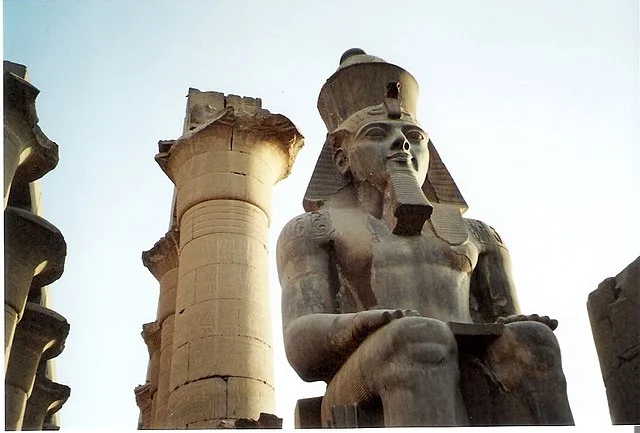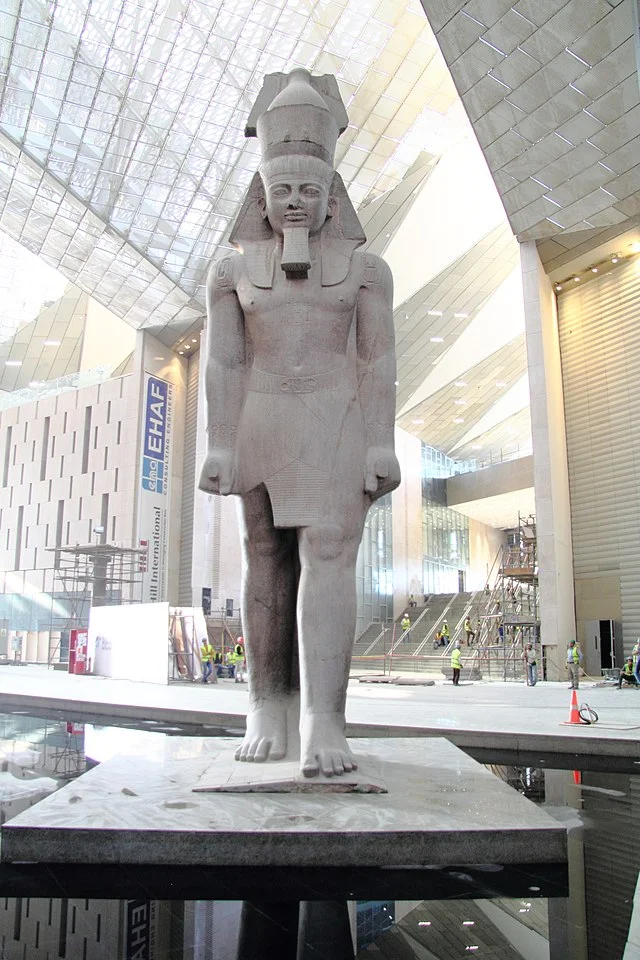The Statue of Ramesses II represents one of the most iconic symbols of ancient Egypt’s grand pharaonic history. Ramesses II, often regarded as Ramesses the Great, ruled Egypt from 1279 to 1213 BC. Known for his military conquests, extensive construction projects, and lasting influence, Ramesses II commissioned many monuments to solidify his legacy, including several impressive statues across Egypt.
Get your dose of History via Email
Historical Background of Ramesses II

Ramesses II was the third pharaoh of Egypt’s Nineteenth Dynasty. He ruled for over 66 years, making him one of Egypt’s longest-reigning rulers. Ramesses led successful military campaigns, primarily against the Hittites, and secured Egypt’s borders. His reign marked a high point in Egyptian prosperity and power, reflected in the monuments he built to honor his reign and the Egyptian gods.
In addition to military achievements, Ramesses II was known for his architectural projects. His reign saw the construction of grand temples and statues, including the famous Abu Simbel temples in Nubia. Ramesses wanted these monuments to reflect his power, religious devotion, and lasting impact on Egyptian civilization.Description and Location of the Statue of Ramesses II
Description and Location of the Statue of Ramesses II
The Statue of Ramesses II is a massive depiction of the pharaoh that once stood in the temple complex of Memphis, the ancient capital of Egypt. Carved from a single block of red granite, this statue exemplifies the traditional style of Egyptian sculpture with its rigid, symmetrical form and highly detailed craftsmanship. The statue originally measured about 36 feet in height, although parts of it, including the legs, were damaged over time. Today, the statue lies in the open-air museum in Memphis.
In addition to the Memphis statue, Ramesses II commissioned several other statues of himself throughout Egypt. These statues can be found at key historical sites such as Luxor, Karnak, and Abu Simbel, reflecting the widespread influence of his reign and the pride he held in his identity as Egypt’s ruler.
Artistic Significance of the Statue
The Statue of Ramesses II is a prime example of Egyptian monumental sculpture, symbolizing the power and divine status of the pharaoh. It follows the conventional form seen in pharaonic statues: a highly stylized, idealized image, with a youthful face and muscular physique to project strength and godlike attributes. Egyptian artists aimed to create timeless representations of their rulers. This statue reflects the canonical proportions and design principles that had governed Egyptian art for centuries.
The statue is adorned with symbols of power and authority. Ramesses wears the traditional pharaonic headdress, the nemes, with the uraeus, a cobra emblem signifying kingship and protection from the gods. His figure holds a regal posture, further emphasizing his authoritative presence.
Restoration and Relocation Efforts
Over time, many statues of Ramesses II experienced damage, particularly in the cases where they were left exposed to the elements or subject to looting. The Statue of Ramesses II in Memphis is one such example, suffering damage to its legs and base. During the early 20th century, British and Egyptian authorities worked to restore the statue as much as possible, securing it within the open-air museum in Memphis.
In 1955, another monumental statue of Ramesses II was relocated from Memphis to Ramses Square in Cairo. However, due to pollution and environmental damage, Egyptian authorities decided to move it again in 2006, this time to the Grand Egyptian Museum in Giza, where conservation efforts could better protect it. These moves reflect the importance of preserving ancient artifacts in modern contexts.
Cultural and Religious Importance
The Statue of Ramesses II is more than just a work of art; it serves as a cultural and religious icon of ancient Egyptian civilization. Ramesses II regarded himself as both a political and religious leader, often associating himself with the gods. In particular, he claimed a close connection with the god Amun-Ra, who was the chief deity of Egypt’s New Kingdom. By commissioning large statues, Ramesses intended to display not only his power but also his divine favor, asserting that he was the living representation of the gods on Earth.
These statues would also have served a functional religious purpose, particularly in temple complexes where they stood as representations of Ramesses’s presence, even when he was not physically there. Worshippers who came to these temples could honor the pharaoh, reinforcing his influence across all of Egypt.
Conclusion
The Statue of Ramesses II remains a lasting symbol of ancient Egypt’s monumental artistry and the power of one of its greatest pharaohs. Through his statues, Ramesses II aimed to project his legacy and divine status, ensuring his influence would endure for centuries. The preservation of these statues, from Memphis to Cairo, reflects modern Egypt’s commitment to safeguarding its heritage for future generations. The legacy of Ramesses II, enshrined in stone, continues to captivate those who seek to understand the grandeur of ancient Egypt.
Source:

